Treasures of the forest
ince working at a husky lodge, my interest for creating things from wood have gotten bigger and bigger, and especially the desire to create a traditional drinking cup from a wooden burl. A burl, for the non-woodworkers out there, is a wooden lump that can be found growing on trees of all kinds. They start growing after some sort of stress, like an injury or infection, and the wood will be much harder and tougher than the wood in the rest of the tree. Also, it will often have beautiful drawings in the wood or dots from where buds have formed and then been swallowed by growth, and all this makes it perfekt for woodworkers. It has been a dream of mine for a long time to make a cup out of a small burl, and a few weeks ago I finally found one that would be perfect.
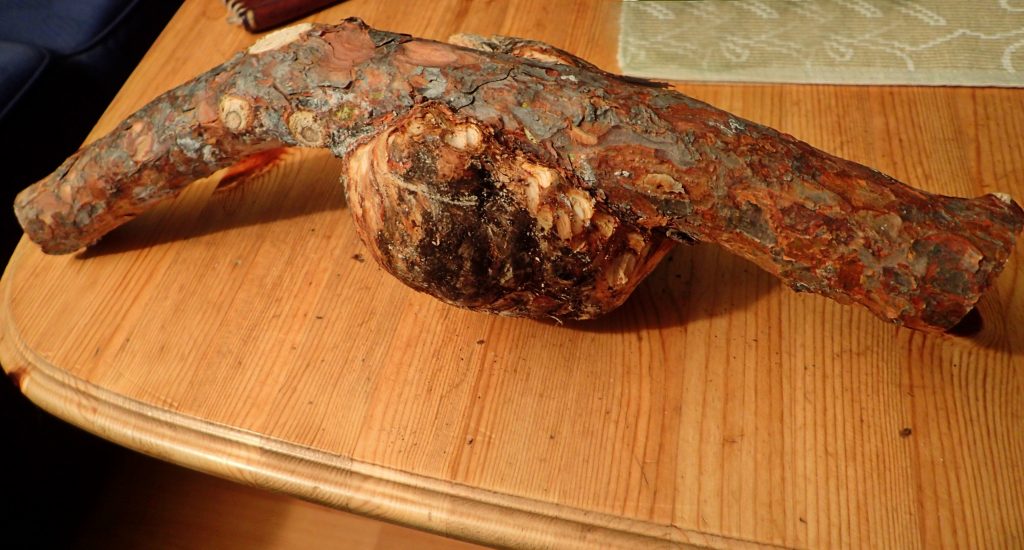
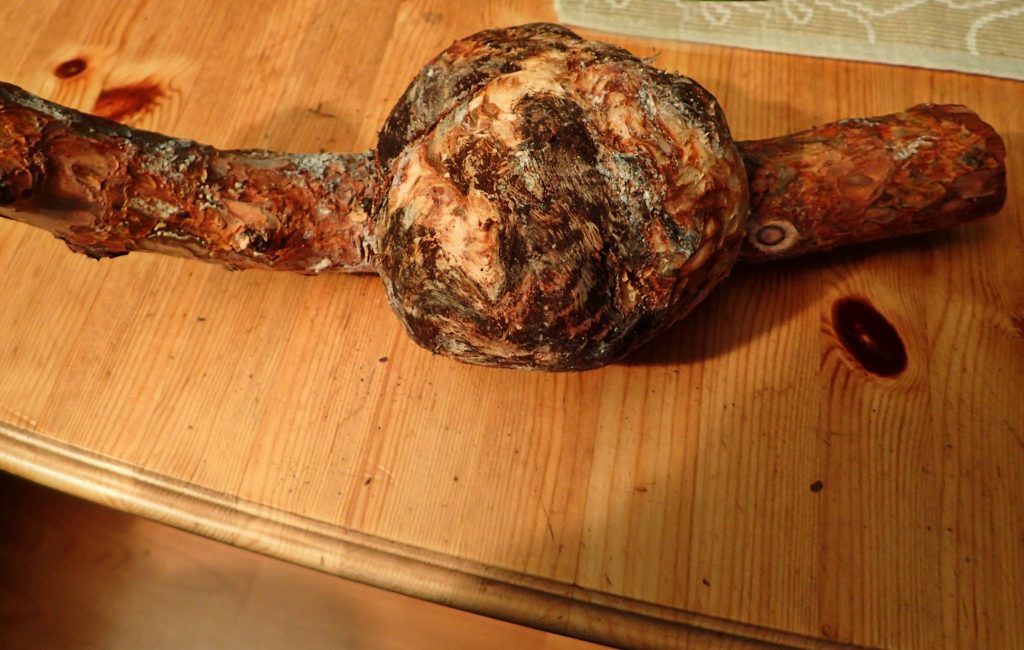
What made this one so perfect was that it was growing on a branch, instead of the trunk, which meant it would be easy to get material for a handle. Originally there was bark around it, but after I started cutting it I found fungus and rot between the bark and the wood, and I like to think that I did the tree a favour by removing it. And also, when you see the end result, you’ll understand why I’m happy that I removed the bark. A professional woodworker with a workshop will most likely use some kind of powertool to hollow this out, but I’m both a bit traditional and lacking in space at the moment, so my weapon of choice is an old-fashioned spoon knife. It’s slow, but I have plenty of time, and it means I can do it in the comfort of a corner in my living room.

That last picture shows the hollowing-process about halfway through, and already the unique drawings are starting to show themselves. There’s also a sizeable crack, but since I had already reached it there was nothing I could do but keep shaving and deal with it later.
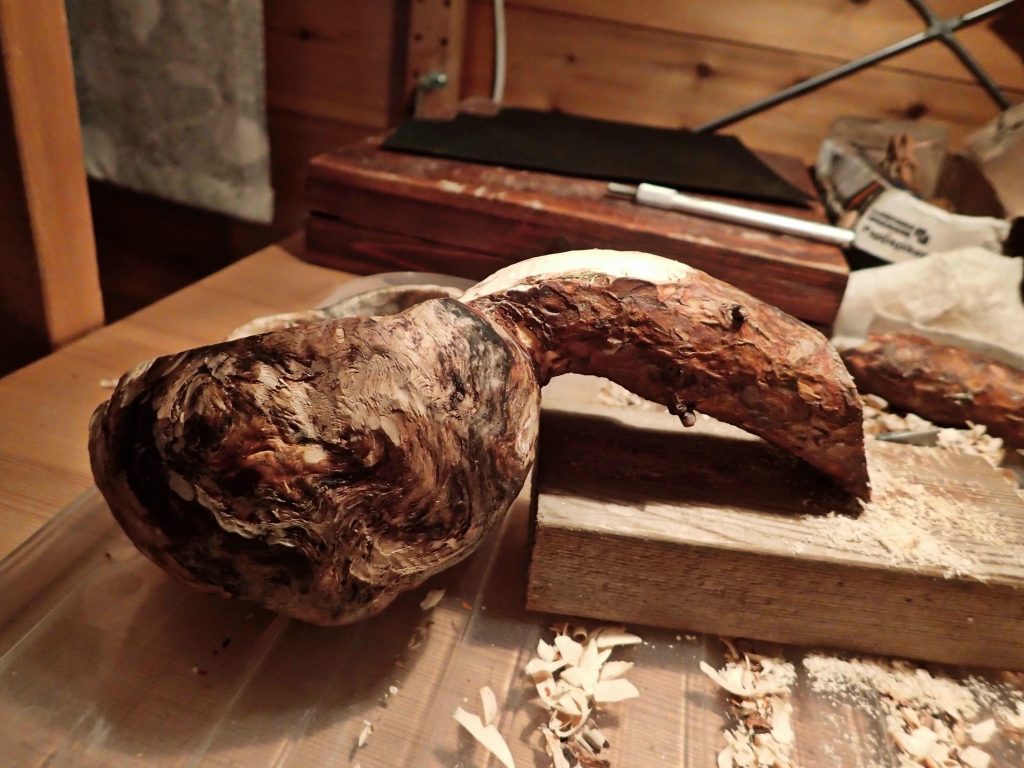
This was the last picture I remembered to take before I started the handle and the sanding process. I always planned to put a piece of antler at the end of the handle, and also I had to be careful that I didn’t remove too much in the curve between the branch and the burl, so I wouldn’t weaken the handle.
Here all the rough sanding is done, and the handle is ready shaped. The crack has been filled from the inside with a two-component glue that turns partly transparent when dry, so it won’t be too noticeable.
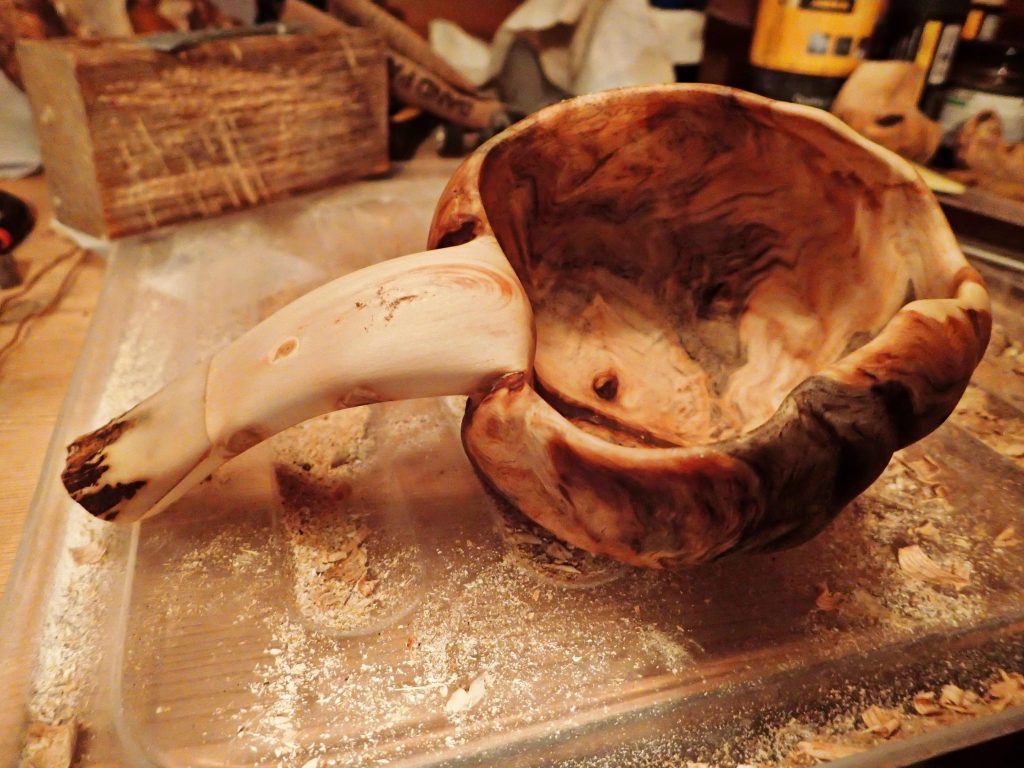
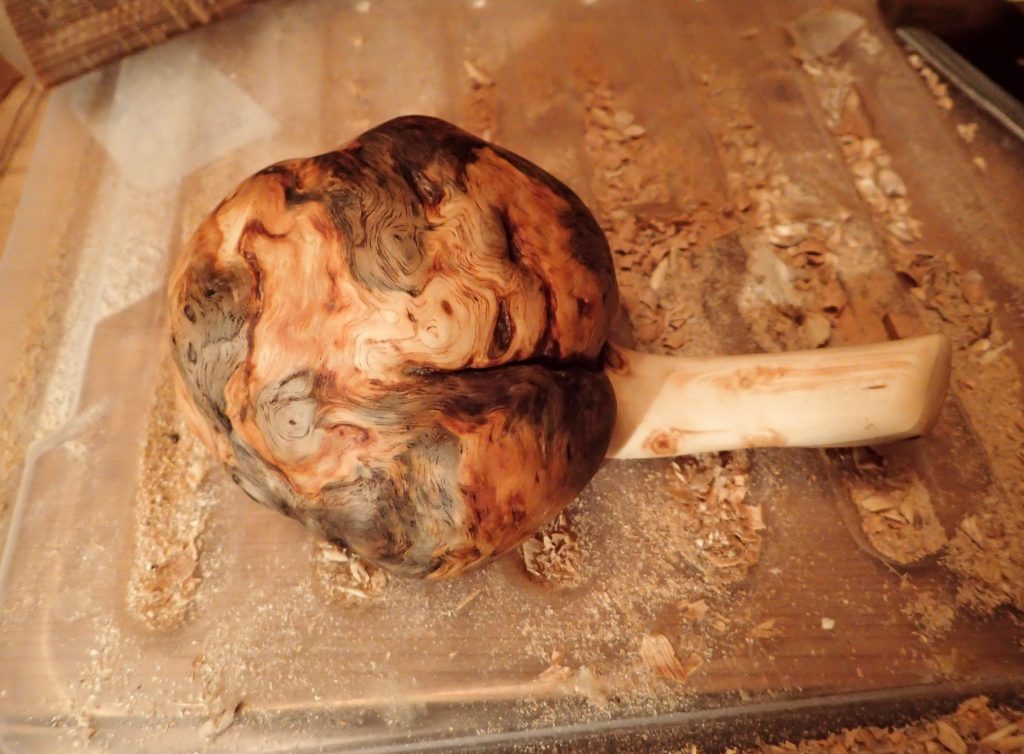
The finished cup, after a few generous coatings with standard Olive Oil, which gives it kind of a golden hue. When Pine starts to dry out it turns grey, which is the reason for the grey areas on it, and to me it looks awesome. After it was properly dried, the outside was polished with wax, and then tested for leaks. Completely sealed, and ready for use!
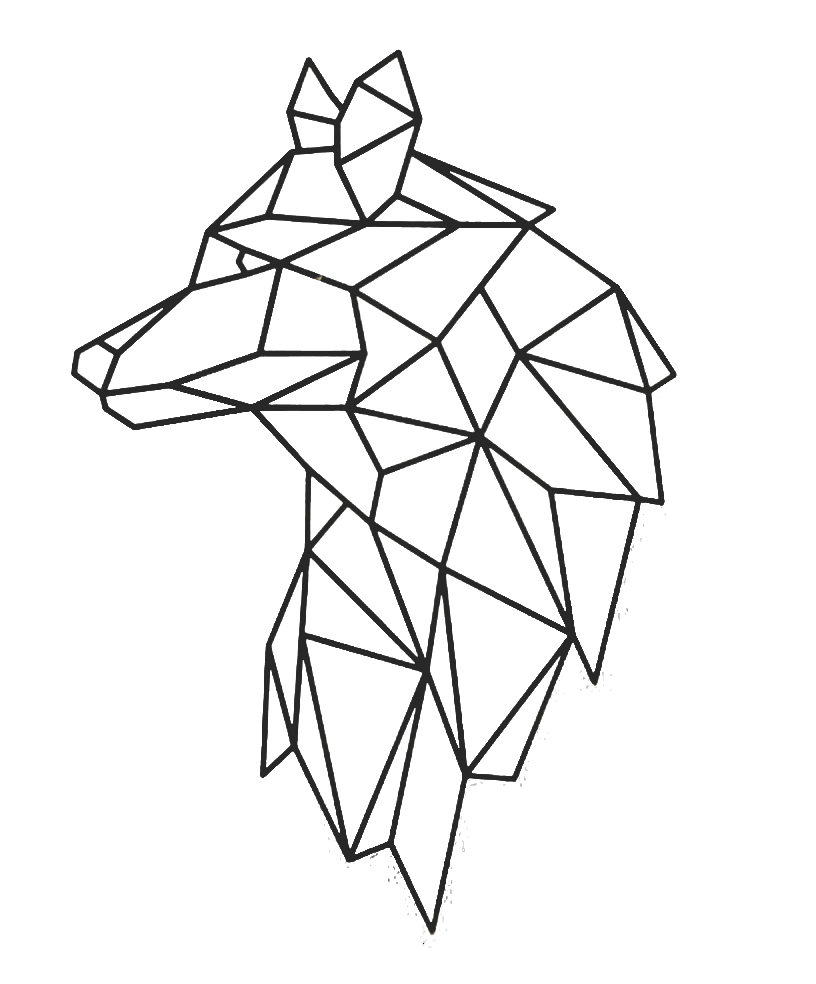
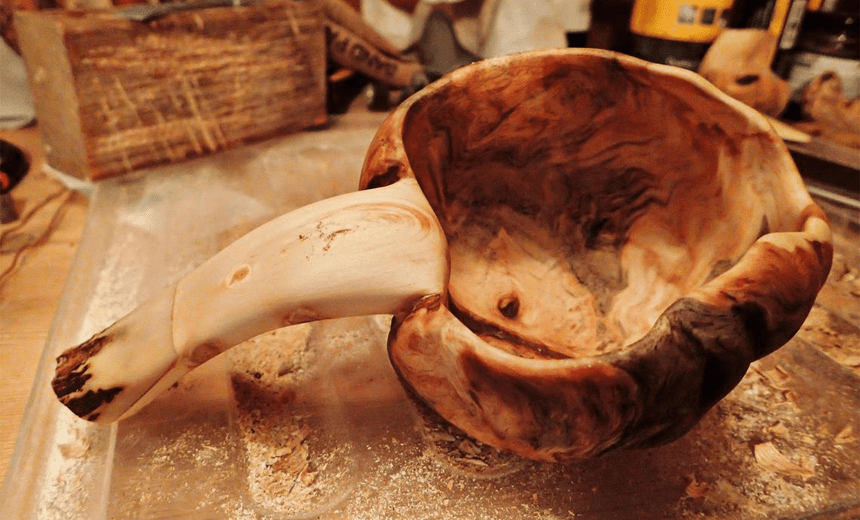
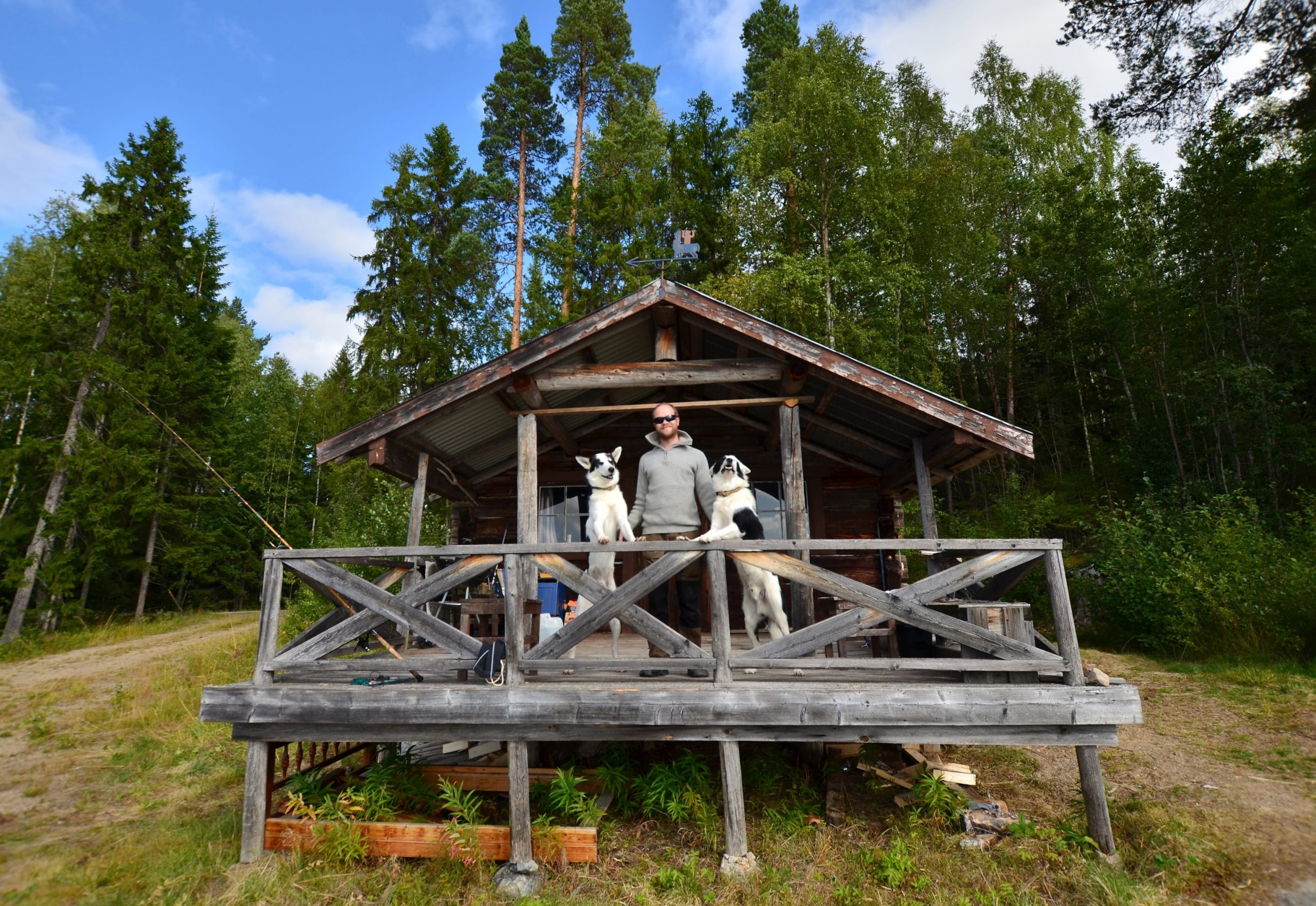


Leave a Reply